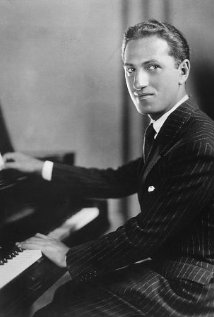
ANNOUNCEMENT: If you liked Weill, go hear his musical setting of the entire Old Testament, The Eternal Road, adapted and abridged by the Collegiate Chorale under the title The Road of Promise. It was written in 1937, near the end of his middle period. Performances are in Carnegie Hall on May 6 and 7. As I recall, the Golden Calf scene is a show-stopper.

Don't let anybody kid you out of it, children. George Gershwin's piano concerto is about the most important new work that has been aired in this hamlet of ours in many somethings, and when we say "important" we're not using a nicenellie for "dull". By the time that this meets your careless eyes, there will have been much shouting, more whispering, and public dancing in Carnegie Hall, if not, as the intelligentsia are saying, in the streets...The Charleston foot print of two beats separated by an eighth-rest is the theme of his first movement, but the vulgarity of it has been transformed into brooding vitality. ‐ The New Yorker, December 12, 1925
The first American-born composer in our lineup, George Gershwin died young, but not before producing some unforgettable music for the concert hall, the jazz hall, and the musical stage. Like Weill, he was amazingly versatile. In this assignment you will listen to his greatest work of concert music, the Concerto in F. His songs, with words by his brother Ira, are also masterpieces, and we will hear some in class.
Gershwin was asked to write the Concerto in 1924 after the huge success of his Rhapsody in Blue, for the same forces. He originally considered the title New York Concerto before settling on the title Concerto in F. He wrote the piece in Chautauqua in the summer of 1925. He was also the soloist at its first public performance, in Carnegie Hall on December 3, 1925.
The first movement is suffused with the rhythm of the Charleston, the dance that had taken the world by storm in 1923.
WATCH this video of Josephine Baker dancing the Charleston in 1925. Listen for the "Charles-TON!" rhythm (a fast 123-12345) when she begins dancing. On another video of her you can hear a singer singing "Charles-TON!" in the characteristic rhythm near the end.
PRINT the questionnaire and fill it out as you LISTEN to Gershwin's Concerto in F.
Concerto in F
played by Earl Wild with the Boston Pops conducted by
Arthur Fiedler
I: Allegro (12'00)
II: Adagio; Andante con moto (10'29)
III: Allegro agitato (6'15)